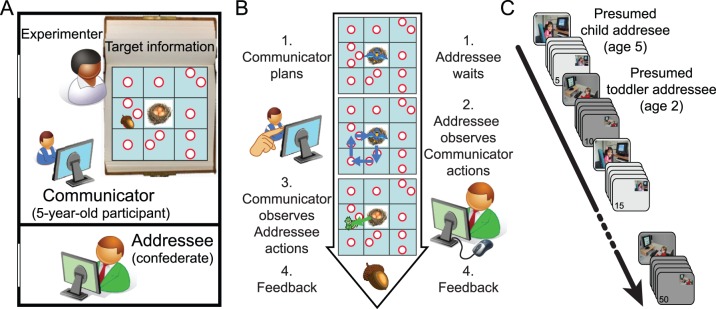Figure 1. Task setup.

(A) The Communicator, a 5-year-old participant, sat next to an Experimenter who provided the task instructions and the trial-specific location of the acorn but played no part in the communicative game. The Addressee, a confederate who performed the role of a toddler and a child (see panel C), while remaining blind to which one of the two roles he was performing in any given trial, sat outside the experimental room facing another monitor. (B) Each single trial encompassed four successive events. (1) the Experimenter showed to the Communicator only the location of the acorn (see panel A), and the Communicator had unlimited time to plan the movements; (2) the Communicator moved the bird icon on the game board by touching a touch-screen with a finger (the movements of the bird were visible to both Communicator and Addressee); (3) the Addressee moved the squirrel icon on the game board with a digital mouse (the movements of the squirrel were visible to both Communicator and Addressee); (4) both players received common feedback on the communicative success of the trial. Note that the bird, unlike the squirrel which could move freely, could only move to the center of each of the nine grid squares, and only through vertical or horizontal displacements. This feature of the task made it difficult for the Communicator and the Addressee to discriminate the location of multiple potential targets within a square (the white circles) on the basis of the location of the bird alone. (C) A digital photograph of the current presumed addressee was presented to the Communicator in full screen before the onset of each block of 5 trials, and in the top right corner during each block.
